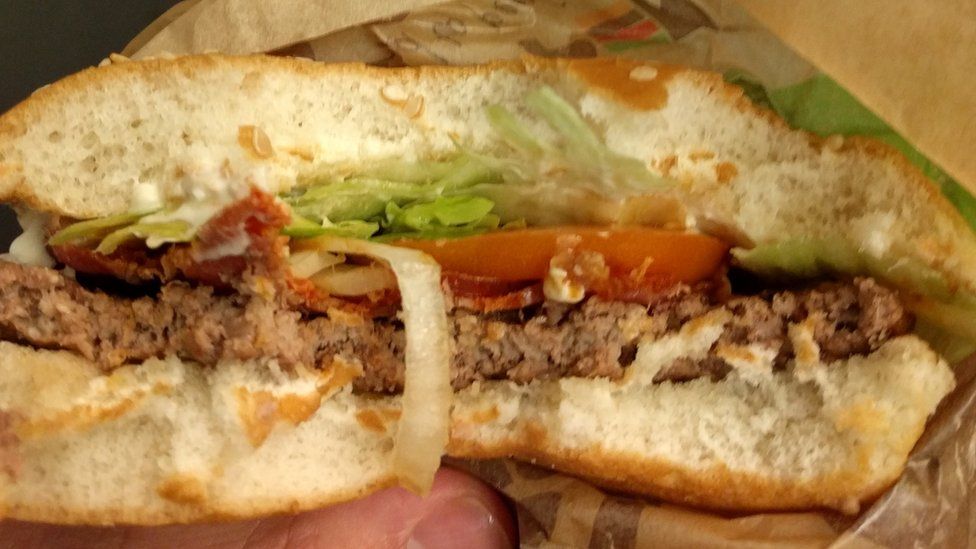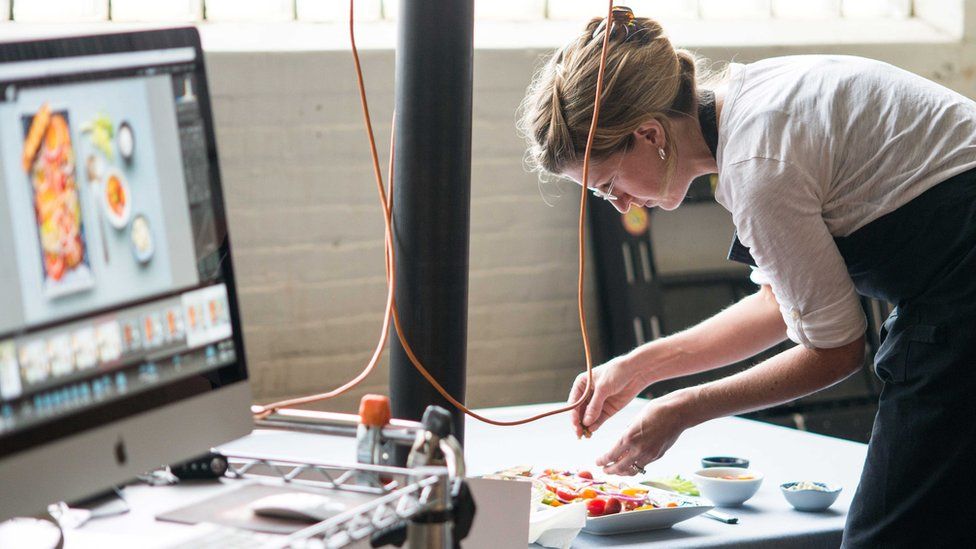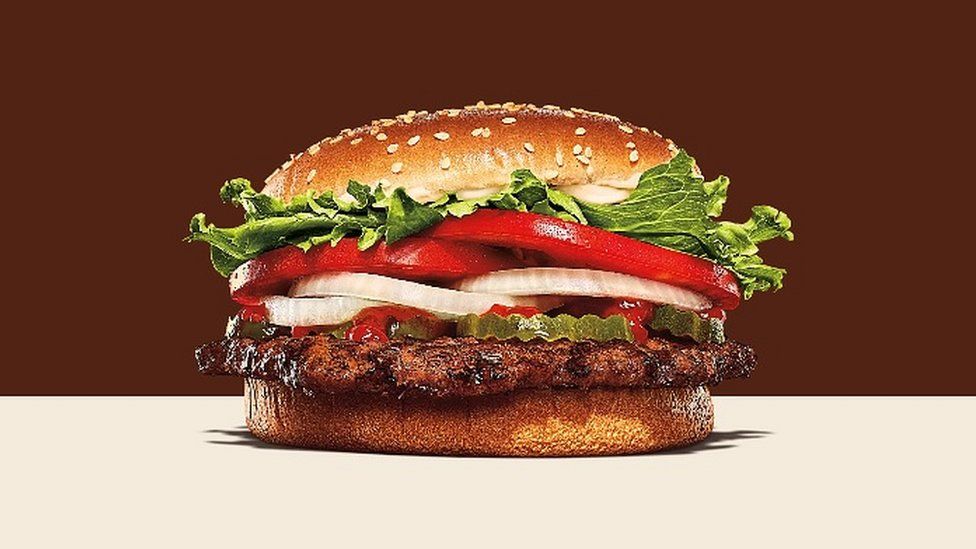
Chris is a big burger fan. He'll get one on the way home if it's late. Or for dinner with the kids. Or sometimes just for a quick snack to fill a hole.
Yet more than once he has found himself sending pictures of his dinner to friends and fellow burger-lovers, so they can laugh over them. The difference between what is advertised and what comes over the counter just seems so huge.
"Most of the time it looks like it has been sat on," he says.
So when he heard Burger King customers in the US were taking the company to court it struck a chord.
"You feel like you've been ripped off," says the 42-year-old from south London, who preferred not to give his surname. "But who's going to embarrass themselves by going back to complain? You just swallow it."

Burger King has said the burgers it sells do not have to look "exactly like the picture" and that all the products featured in its advertising materials are "the same burgers served to guests all across the UK".
But diners sometimes feel the gulf between the image and what is served stretches credulity.
Disgruntled customers cite other examples: ice cream is shown with whole almonds but contains only shavings, pizza toppings are meagre, salads pricey but pitiful.
Cheese pull
Amy Wardle, head of New York and Philadelphia-based food styling company Astir, says there's a rule of thumb that pictures promoting food should not contain ingredients that aren't in the product itself.
But that still leaves room for manoeuvre.
If you are promoting bread, you can put sponges between slices to give the sandwich a fuller look, she says. To make a slice of pizza have the right "cheese pull" effect you might need to add extra cheese taken from several identical pizzas. Cereal can be pictured in a bowl of glue, because that makes it less soggy than using milk.
Burgers in advertising images, says Ms Wardle, often have "scaffolding" made of toothpicks to stop the bun sliding off the mayonnaise.

"It's not that I'm going to use something fake," says Ms Wardle. "[But] I am going to pick through dozens of buns to find that perfect top bun that's not wrinkled, not torn.
"I am going to take my little tiny scissors and make sure the edge of the bun is perfectly even so it doesn't have crumbs hanging off, little dangly bits from the slicing machine."
"Then I'll use the freshest lettuce that has no browning, the perfect ruffle to it. I want the reddest tomato."
She agrees the online image of Burger King's Whopper - the burger that's at the centre of the US court case - does make it look as though the meat patty is larger than the bun it sits on.

Perhaps the burger you buy has suffered from being wrapped and left under a heat lamp, with the result that the bun is a bit squashed, she suggests.
But it's also possible the patty has been moved forward, or that a particularly small bun was used, making the meat appear "more abundant".
In theory, the stylist could even have made a cut in the back of the patty and spread it horizontally, says Ms Wardle.
Puffery
There is no specific rule against using these techniques in the US, says Mark Bartholomew, professor of law at the University at Buffalo in New York, as long the image does not amount to a misrepresentation of the product.
But there is a loophole, he explains. Customers are expected to be smart enough to recognise that ads will often contain a certain amount of "puffery".
"The key here is: was anybody actually fooled when they parted with their money?" he says. "Did anyone actually think they were getting the TV version of the Whopper?"
In the US case in Florida, Burger King could argue that no-one really expects their burger to look like the one on the poster, he suggests.
Already the judge has dismissed the claims regarding Burger King's advertising images, only allowing the claims about in-store images to be heard, points out Prof Bartholomew.
While we know advertising can contain hype and exaggeration, the thinking goes, images at the point-of-sale are closer to being part of a contract - you see it, you order it - so that is what will be argued over in court.
But Prof Bartholomew says so far cases based around allegedly misleading images have rarely succeeded, because they are so subjective.
And the US Federal Trade Commission almost never steps in on these kinds of cases.
In the UK the regulations are a bit tighter, although the underlying principle is the same: promotional images must not be misleading.
The Advertising Standards Authority (ASA) is responsible for policing promotional images, except those in stores and on menus, says its spokesman, Toby King.
Small hands
If questions are raised, it is up to firms to provide evidence that their images show the genuine product.
"We know consumers are savvy. They understand ads are not reality. But there is a line. Our job is to decide when that line has been crossed," Mr King says.
The ASA has banned images in the past including a KFC ad in 2005. The ASA sent staff out to buy the Mini Fillet chicken burgers so they could see for themselves how big they really were.
"In this case KFC suggested it was that the model had small hands," says Mr King.
In 2010, a Burger King advert was banned, again over size issues. "If we think there's misrepresentation going on, that's when we ban the ad," he says.
Chris in south London isn't going to stop buying burgers. But he would rather companies used publicity photos that were more honest.
"A burger isn't even meant to look like that, like they're in antigravity," he says. "They should be proud of their actual product."
Related Topics
"like this" - Google News
September 03, 2023 at 06:06AM
https://ift.tt/TZjXheV
Why your burger may not always look like the advert - BBC
"like this" - Google News
https://ift.tt/V4nuTmL
Shoes Man Tutorial
Pos News Update
Meme Update
Korean Entertainment News
Japan News Update
No comments:
Post a Comment